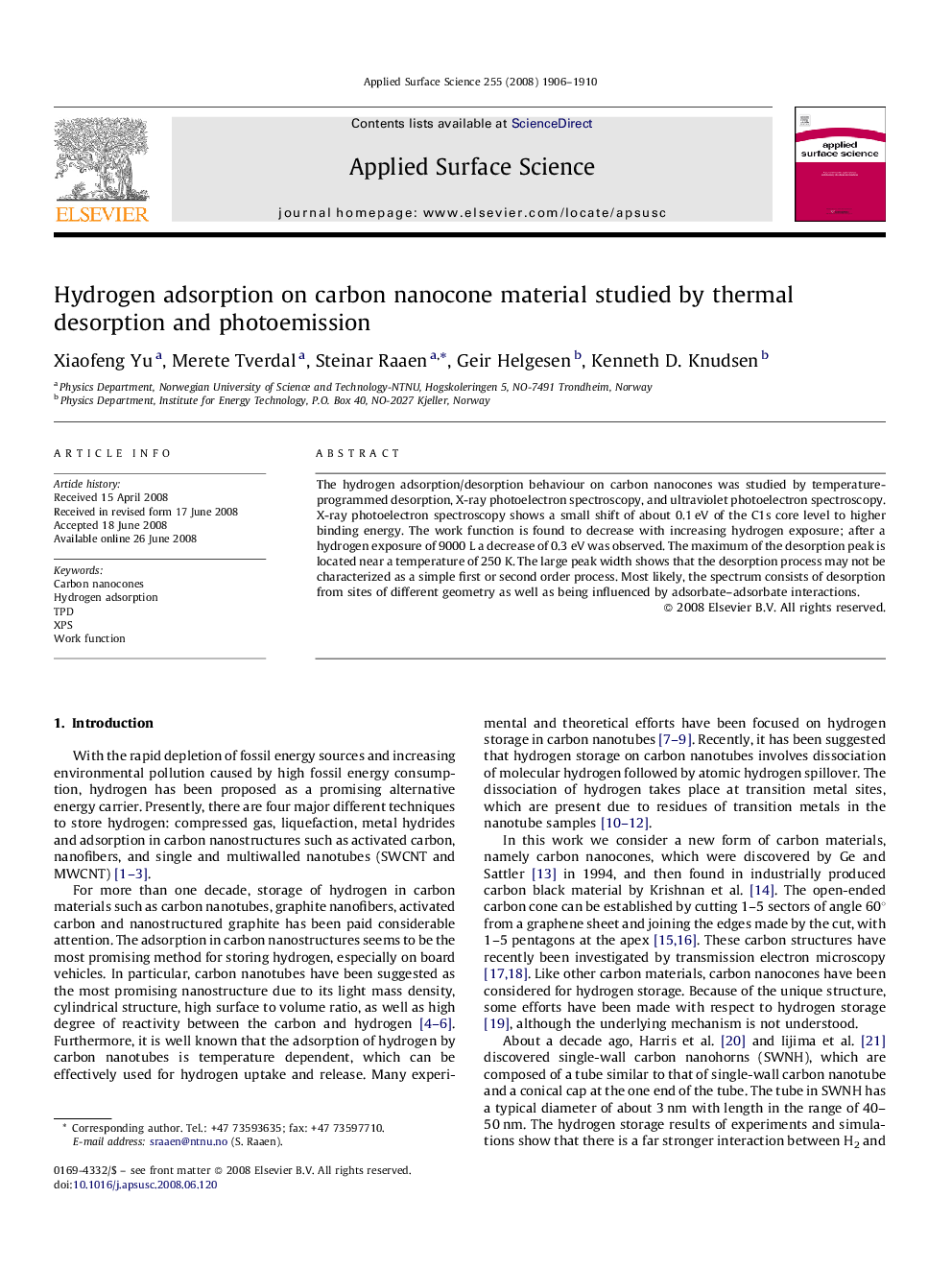| Article ID | Journal | Published Year | Pages | File Type |
|---|---|---|---|---|
| 5363192 | Applied Surface Science | 2008 | 5 Pages |
The hydrogen adsorption/desorption behaviour on carbon nanocones was studied by temperature-programmed desorption, X-ray photoelectron spectroscopy, and ultraviolet photoelectron spectroscopy. X-ray photoelectron spectroscopy shows a small shift of about 0.1Â eV of the C1s core level to higher binding energy. The work function is found to decrease with increasing hydrogen exposure; after a hydrogen exposure of 9000Â L a decrease of 0.3Â eV was observed. The maximum of the desorption peak is located near a temperature of 250Â K. The large peak width shows that the desorption process may not be characterized as a simple first or second order process. Most likely, the spectrum consists of desorption from sites of different geometry as well as being influenced by adsorbate-adsorbate interactions.
